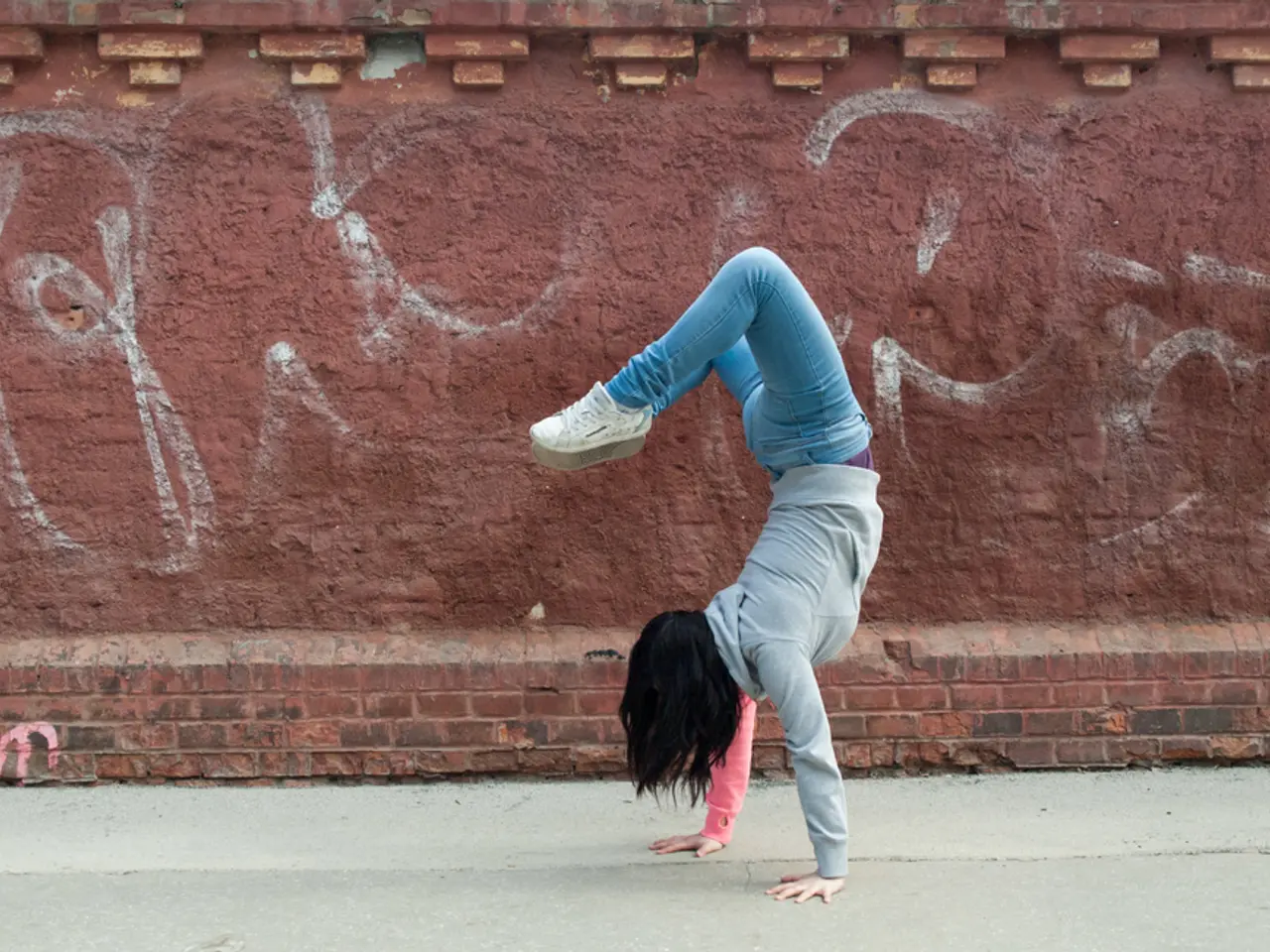Lowering your stroke risk by almost half through an effortless method
In a recent study conducted by the University of Missouri-Columbia, the impact of fidgeting on stroke risk was explored. However, the research does not specify any particular interventions or lifestyle changes to reduce the risk of stroke associated with sedentary activities.
The study also does not delve into the specific light, moderate, or vigorous activities that were analyzed. Yet, it does reveal that spending more than 13 hours per day in sedentary activities can increase the risk of stroke by 44% within 7 years, compared to those who spend 11 hours or less in such activities.
Frequent fidgeting during prolonged sitting has been found to improve blood flow and potentially reduce stroke risk. Additionally, the study suggests that daily activities contribute to heart protection.
A separate study conducted by San Diego State University analyzed the risk of stroke based on sedentary activities. This study involved 7,607 American men and women. The findings indicate that for every extra hour per day spent sitting, the stroke risk increases by another 14%.
However, it's important to note that the studies do not provide information on other health factors that may contribute to stroke risk. Moreover, the age group of the participants in both studies was limited to individuals in their 60s.
The studies also do not specify the exact sedentary activities that were analyzed. Yet, they do provide some encouraging news: moderate or vigorous activity for 14 minutes or more reduces stroke risk by 47%, while light exercise for 3.5 hours per week reduces stroke risk by 26%.
In summary, both studies underscore the importance of regular movement in maintaining heart health. Prolonged sedentary activities can significantly increase the risk of stroke, while regular exercise offers protective benefits. However, more research is needed to fully understand the complex relationship between sedentary behaviour, exercise, and stroke risk.
[1] American Heart Association. (2019). Sitting Too Much Linked to Increased Risk of Heart Disease and Early Death. [online] Available at: https://www.heart.org/en/news/2019/04/08/sitting-too-much-linked-to-increased-risk-of-heart-disease-and-early-death [2] Mayo Clinic. (2021). Sitting: How Does Too Much Sitting Affect Your Health? [online] Available at: https://www.mayoclinic.org/healthy-lifestyle/adult-health/expert-answers/sitting/faq-20058468 [3] American Stroke Association. (2021). Sitting Too Much Can Be Deadly. [online] Available at: https://www.strokeassociation.org/en/about-stroke/risk-factors/other-risk-factors/sitting-too-much-can-be-deadly [4] National Institute of Neurological Disorders and Stroke. (2021). Back Pain Information Page. [online] Available at: https://www.ninds.nih.gov/Disorders/Patient-Caregiver-Education/Fact-Sheets/Back-Pain-Information-Page [5] National Cancer Institute. (2021). Sedentary Behavior and Cancer Risk. [online] Available at: https://www.cancer.gov/about-cancer/causes-prevention/risk/diet/sedentary-behavior-fact-sheet
- Incorporating fitness and exercise, workplace-wellness programs, and adhering to health-and-wellness practices could potentially complement the heart-protective effects of daily activities mentioned in the studies.
- Considering the increased risk of stroke associated with sedentary activities, it becomes crucial to address medical-conditions such as respiratory-conditions that may further aggravate this risk, as highlighted by both studies.
- Skin-care and mental-health should also be considered essential aspects of a holistic approach to reducing stroke risk, since stress and other psychological factors can lead to sedentary behaviour and deteriorate overall health.
- To ensure comprehensive understanding, further studies should focus on the role of cardiovascular-health in the relationship between sedentary behavior, exercise, and stroke risk across different age groups, as well as exploring various medical-conditions and their influences.




